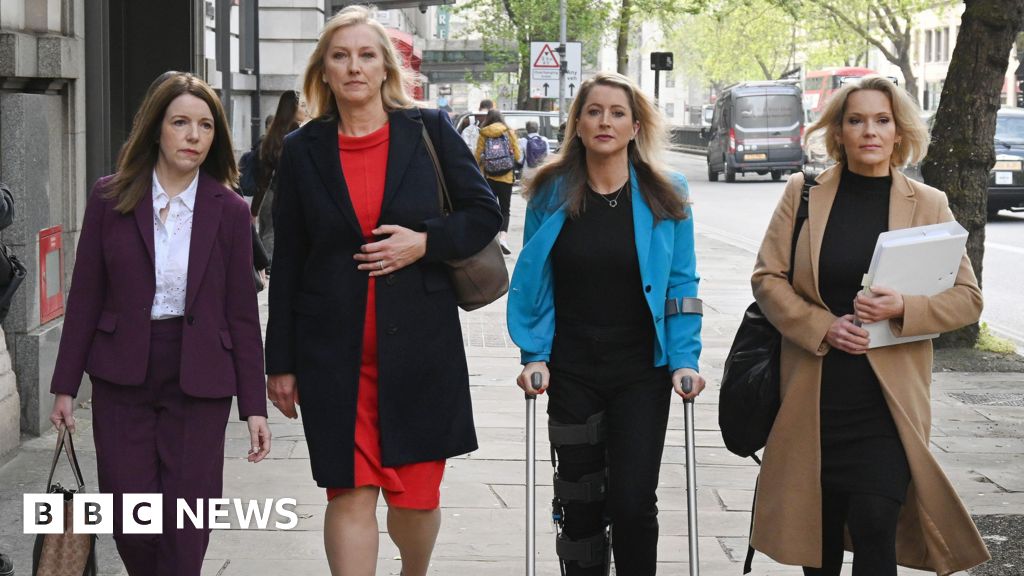Lando Norris says he has a "good opportunity" to make up ground on Max Verstappen in the championship in Sunday’s Italian Grand Prix.
The McLaren driver took his third pole position in the last four races, while Verstappen's Red Bull will start down in seventh after experiencing what the world champion described as a "very weird" qualifying session.
Norris, who led team-mate Oscar Piastri to a McLaren one-two ahead of Mercedes' George Russell, is 70 points behind Verstappen in the drivers' standings with nine races remaining.
The Briton said: "It’s a good opportunity but I expect him to come through and be behind us probably quite quickly."
Norris pointed to Verstappen’s strong pace on the race-simulation runs in Friday practice, and said the Dutchman's car also looked good on tyre wear.
All teams have been suffering from a phenomenon known as 'graining', where the tyre surface tears and reduces grip on the newly resurfaced Monza track.
If Norris is to have a hope of beating Verstappen to the championship, he needs to gain an average of just over seven points a race - the difference between first and second places.
As he is unlikely to be able to win all the remaining races, it effectively means Norris needs other teams and drivers to push Verstappen down the order in as many races as possible.
Norris said: "Their race pace looked very strong and [they are] on the good side of the graining.
"For some reason, [Verstappen] didn't take the same steps in qualifying. In Q2 he was quick, quicker than me even on the used tyre, and even his gap to [team-mate Sergio] Perez was not as big as it normally is. I'll try and make the most of that."
Verstappen said Red Bull had been struggling all weekend but was at a loss to explain his lack of performance in the final part of qualifying.
He had been second fastest on used tyres in the second part but was 0.36secs slower on new tyres in the final session, saying he had lost front grip.
"It's just weird it suddenly happened," he said. "Q1 and Q2 it was not like that, but on the other hand our car is extremely tricky to drive from entry to mid-corner.
"It is a massive balance shift at the moment, so if you fix one thing it creates another problem. So we have to be quite careful with that as well."
Asked if he would be able to contest the race win, Verstappen said: "Normally not. The whole weekend already we were too slow.
"The problem is that when you don’t have a balanced car, of course in the race that is quite painful on tyres also.
"Maybe it might be little better in the race, but we are starting in the back of the top group so we just have to wait and see what happens in front of us. There are a few unknowns with the graining as well.
"[We will] do as much as we can."
Norris, who produced one of the most dominant victories of the season at the Dutch Grand Prix last weekend, cautioned against assuming McLaren would do the same at Monza despite locking out the front row.
"Honestly, when you look back to Zandvoort, you could say, yes, there is enough evidence to say we would have a very strong race - here less so," he said.
"First and second normally translates into a quick race car, but there are more question marks about graining and degradation, and [I'm] a little bit more nervous about what could happen. But [I'm] in the best position for it."
And McLaren team principal Andrea Stella pointed to Verstappen's time on used tyres in the second session, which was just over 0.3secs from pole, as evidence that Red Bull were "strong" but that the balance had simply gone away from Verstappen in the final session.
Norris' big concern is the start - he has failed to convert any of his three poles this year into a lead at the first corner.
He said: "You of course review things, and I feel like we have made progress so far with our practice launches - just crack on and do our best."
Russell said: "If they make a good start, it will be difficult [to beat them]."
The new track surface has left the teams and drivers expecting a race of unusual character.
In the past, Monza has been a race in which teams make only one pit stop, because it had a low-abrasion track surface, low tyre wear and a long pit lane, which increases stop time.
But the new surface has changed the character of the track and it is now much tougher on tyres. Teams will still want to try to do one stop, but higher tyre wear may force them to do two.

 6 months ago
10
6 months ago
10









